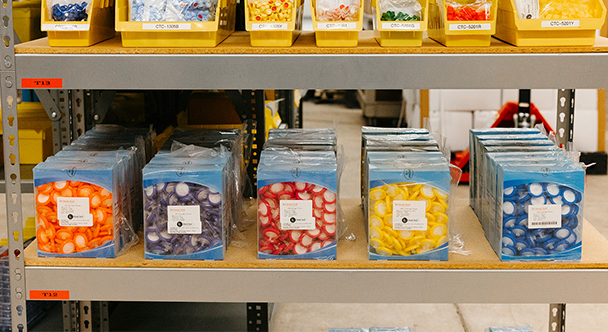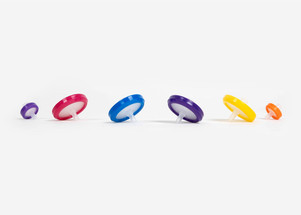Posted by Chrom Tech on 28th Oct 2025
Syringe Filters for HPLC Sample Preparation: A Guide to Choosing the Right Filter for Consistent and Accurate Results
By Chrom Tech – Your Chromatography Consumables Partner Since 1983
How to Choose the Right Syringe Filter for HPLC Sample Preparation
Sample preparation is a critical step in High-Performance Liquid Chromatography (HPLC). One of the most effective methods to achieve clean, consistent results is syringe filtration, which removes particulates that can clog injectors, damage columns, or distort chromatographic peaks.

Key Factors in Selecting a Syringe Filter
Choosing the right syringe filter involves three essential parameters: disc diameter, pore size, and membrane material. Selecting the wrong filter can cause poor flow, contamination, or data inconsistency. Each factor plays a specific role in achieving reliable HPLC results.
1. Filter Disc Diameter
Chrom Tech syringe filters are available in two diameters to accommodate different sample volumes:
- 13 mm: For small volumes up to ~10 mL
- 30 mm: For larger volumes up to ~200 mL
2. Filter Pore Size
The appropriate pore size ensures optimal filtration efficiency and flow rate. Smaller pores capture finer particulates but may clog faster in dirty samples.
3. Membrane Material
Membrane selection is the most crucial factor, as chemical compatibility and protein-binding properties differ between materials:
- Nylon: Resistant to both aqueous and organic solvents; not recommended for proteins.
- PTFE: Hydrophobic and highly chemical resistant; ideal for organic solvents but unsuitable for aqueous samples.
- PVDF: Low-protein binding, compatible with both aqueous and organic solvents; excellent for biological samples.
- PES: Durable, low-protein binding; great for aqueous and mixed solvents in ion chromatography.
- CA (Cellulose Acetate): Extremely low protein binding; best for aqueous samples.
- PP (Polypropylene): Broad compatibility; hydrophilic and chemically stable for general use.
- Glass Fiber: High-capacity prefilter for samples with visible particulates.
Syringe Filter Quick Selection Guide
| Membrane | Pore Sizes (µm) | 13 mm Part Numbers | 30 mm Part Numbers |
|---|---|---|---|
| Nylon | 0.2, 0.45 | F13-NY020, F13-NY045 | F30-NY020, F30-NY045 |
| PTFE | 0.2, 0.45 | F13-PT020, F13-PT045 | F30-PT020, F30-PT045 |
| PVDF | 0.2, 0.45 | F13-PV020, F13-PV045 | F30-PV020, F30-PV045 |
| PES | 0.2, 0.45 | F13-PS020, F13-PS045 | F30-PS020, F30-PS045 |
| CA | 0.2, 0.45 | F13-CA020, F13-CA045 | F30-CA020, F30-CA045 |
| PP | 0.2, 0.45 | F13-PP020, F13-PP045 | F30-PP020, F30-PP045 |
| Glass Fiber | 0.7, 1.2 | F13-GF070, F13-GF120 | F30-GF070, F30-GF120 |
Why Use Syringe Filters for HPLC?
Syringe filtration is a simple and cost-effective method to ensure reliable, reproducible chromatography. Filtering samples prevents particulates from entering the injector or column, which can cause blockages, backpressure, or baseline noise. Chrom Tech stocks a full range of HPLC syringe filters at competitive prices, helping laboratories maintain uptime and data integrity.
Frequently Asked Questions
What is the difference between 13 mm and 30 mm syringe filters?
13 mm filters are ideal for sample volumes up to ~10 mL, while 30 mm filters can efficiently process up to ~200 mL, offering faster flow and longer filter life.
Which membrane is best for protein samples?
Membranes with low-protein binding, such as PVDF, PES, or CA, minimize sample loss and are ideal for biological or protein-rich samples.
Can PTFE filters be used for aqueous samples?
No. PTFE is hydrophobic and repels water, making it unsuitable for aqueous samples. Use Nylon, PVDF, or PES for water-based filtrations.
Why are syringe filters important in HPLC?
They remove particulates that could clog columns or interfere with separation, ensuring consistent retention times and improved instrument longevity.

